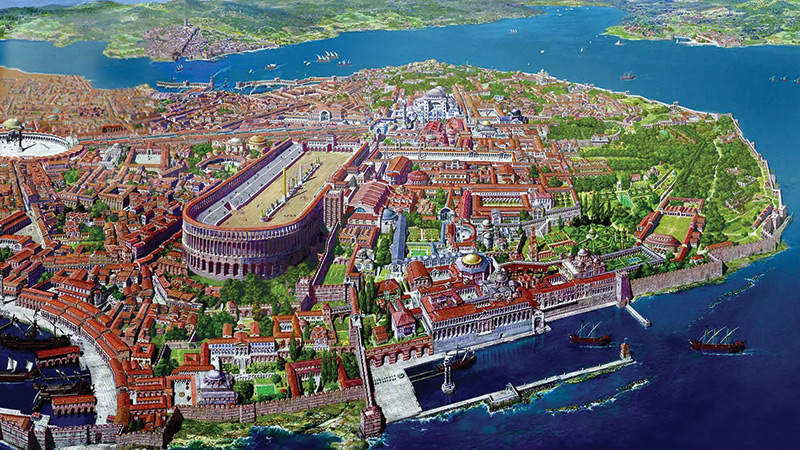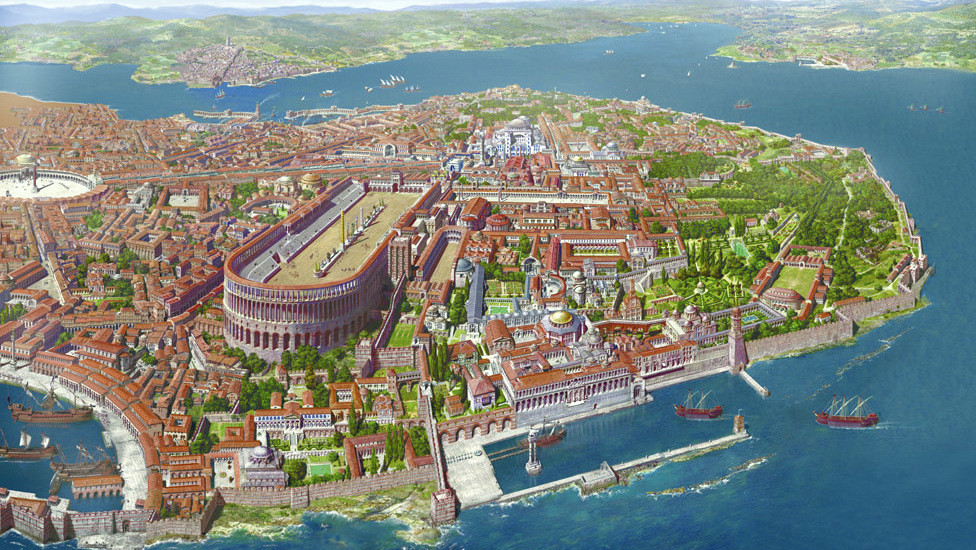Hippodrome de constantinople
https://farmaciadelas.es/
мегатрон бендеры
Hippodrome of Constantinople - Wikipedia. The Hippodrome of Constantinople ( Greek: Ἱππόδρομος τῆς Κωνσταντινουπόλεως, romanized : Hippódromos tēs Kōnstantinoupóleōs; Latin: Circus Maximus Constantinopolitanus; Turkish: Hipodrom ), was a circus that was the sporting and social centre of Constantinople, capital of the Byzantine Empire.. The Hippodrome of Constantinople - World History Encyclopedia. The Hippodrome of Constantinople was an arena used for chariot racing throughout the Byzantine period. First built during the reign of Roman emperor Septimius Severus in the early 3rd century CE, the structure was made more grandiose by emperor Constantine I in the 4th century CE.
сура ясин текст
. Hippodrome of Constantinople - The Byzantine Legacy. Hippodrome of Constantinople Page under construction In 330, ceremonies were held in Constantinople, inaugurating the city as the new capital of the Roman Empire. In preparation for the ceremonies, the emperor Constantine commissioned a series of monumental buildings including an imperial palace linked to a hippodrome.. Hippodrome de Constantinople — Wikipédia. Lhippodrome de Constantinople était un cirque romain construit par Septime Sévère et achevé par Constantin Ier à Byzance. Il accueillait des courses de chars et dautres spectacles, et était orné de nombreux monuments sculptés.. Hippodrome of Constantinople (Sultanahmet Square) - Istanbul Clues. The Hippodrome of Constantinople (today Sultanahmet Square) was the center of social life in the Byzantine Empire for centuries
under the green light
. The Hippodrome, where relentless chariot races were held, was also the scene of many rebellions and massacres. Today, the Hippodrome is located in Sultanahmet, in the heart of Istanbuls Old City.. Hippodrome de Constantinople - Encyclopédie de lHistoire du Monde. Lhippodrome de Constantinople était une arène utilisée pour les courses de chars pendant toute la période byzantine
sinaia garsoniere
. Construite sous le règne de lempereur romain Septime Sévère au début du IIIe siècle de notre ère, la structure fut rendue plus grandiose par lempereur Constantin Ier au IVe siècle. Lhippodrome était également utilisé pour dautres événements publics tels que .. The Hippodrome of Constantinople: 10 Most Unusual Antiquities. The Hippodrome of Constantinople was a jewel in the capital of the Eastern Roman Empire. It was the home of Roman chariot racing and displayed an unusual collection of antiquities. An 18th-century Meydanı Muslim wedding procession through the Hippodrome by Aubry de La Motraye, 1727; with detail from a miniature of Istanbul by Matrakçı .. Hippodrome of Constantinople | istanbul.com. The Ottoman Empire The history of the Hippodrome of Constantinople is a rather complicated one, as evidenced by the fact that many parts of it are no longer standing. The hippodrome has seen a fair bit of destruction in its time. During the 4th Crusade in the year 1204, the hippodrome was raided by Christian forces.. The Hippodrome of Constantinople - Cambridge University Press & Assessment. The Hippodrome of Constantinople Published online by Cambridge University Press: 06 September 2021 Engin Akyürek Summary The Hippodrome of Constantinople was constructed in the fourth century AD, by the Roman Emperor Constantine I, in his new capital.. Hippodrome | Sultanahmet, Istanbul | Attractions - Lonely Planet. The Hippodrome was the centre of Byzantiums life for 1000 years and of Ottoman life for another 400 years, and has been the scene of countless political dramas. Theodosius the Great (r 379-95) had it brought from Egypt to Constantinople in AD 390. On the marble podium below the obelisk, look for the carvings of Theodosius, his wife, his .. The Hippodrome of Constantinople: a short tour - YouTube. A short walk through the surviving monuments of the Byzantine Hippodrome, now a lively plaza in the heart of Sultanahmet, Istanbul. Check out my other channe.. Hippodrome of Constantinople (Istanbul, Turkey) - Nomadic Niko. The Hippodrome was built after 203 by Roman Emperor Septimius Severus. Constantine the Great renovated it in 324 to hold over 100,000 spectators. The racetrack was U-shaped, with the Emperors box (kathisma) on the east side connected to the Great Palace of Constantinople. A statue of four gilded copper horses with a quadriga stood on the .. Hippodrome of Constantinople Istanbul - its history, what to visit. Serpentine Column of Hippodrome of Constantinople. One of the oldest monument in Istanbul; originally it was erected in front of the temple of Apollo at Delphi in Greece. Dating from the 5th century BC it was built from Persian weapons collected by the Greeks after their great victory
orecare diş macunu
. Three snakes coiled to each other form 26 spirals 8 meters .. The underground remains of the Hippodrome of Constantinople. The Hippodrome of Constantinople was a U-shaped racing course, approximately 429 meters long and 119 meters wide. The total capacity of its stands is estimated to be 30,000 spectators. The Kathisma (Emperors Lodge) was on the eastern side of the track as it could be accessed directly from the Great Palace.. Hippodrome de Constantinople Istanbul - lobélisque de Théodose
haiwan yang hidup dalam cuaca melampau
. Découvrez lhistoire et les monuments de lhippodrome de Constantinople, le lieu des courses de chars et des événements politiques de lEmpire byzantin. Visitez ce site historique situé près de la basilique Sainte-Sophie et de la Mosquée Bleue.. Constantinople, Hippodrome - Livius. The Hippodrome of Constantinople was the place for horse races. It still survives as a park in which the traces of the old race course are clearly visible and a ruin. Constructed in 203, during the reign of the emperor Septimius Severus, and expanded after 324 by Constantine the Great, it was about 130 meters wide and 450 meters long.. The History of the Hippodrome in Constantinople. When Rome began to descend in importance, Constantinople began to rise. They built the Hippodrome racetrack. Expert opinions on capacity range from 30,000 to 100,00 people. Map of Constantinople. Photo: Cplakidas / CC BY-SA 3.0. Map showing the location of the Hippodrome in Constantinople. Laps were taken around the spina (spine) .. Plan of the Hippodrome of Constantinople - World History Encyclopedia
Cplakidas, . " Plan of the Hippodrome of Constantinople ." World History Encyclopedia. World History Encyclopedia, 24 Nov 2017. Web

atlete per meshkuj
. 14 Feb 2024
faire une cour en béton
. Advertisement
A plan showing the layout and location of the Hippodrome of Constantiople, in use from the 3rd to 13th century CE.
The Hippodrome of Constantinople - Cambridge University Press & Assessment. The Hippodrome of Constantinople was constructed in the fourth century AD, by the Roman Emperor Constantine I, in his new capital. Throughout Byzantine history the Hippodrome served as a ceremonial, sportive and recreational center of the city; in the early period, it was used mainly as an arena for very popular, competitive, and occasionally violent chariot races, while the Middle Ages .. Hippodrome | Byzantine, Roman & Greek | Britannica. The largest hippodrome of the ancient world was that of Constantinople (now Istanbul), which was begun under the Roman emperor Septimius Severus in ad 203 and completed by Constantine in 330. In this hippodrome much of the seating was supported on tiers of great vaults instead of the more usual embankment. The stadium could house more than 60,000 spectators, and because of its ample .. Category:Hippodrome of Constantinople - Wikimedia Commons. English: The Hippodrome of Constantinople is an ancient Roman racecourse in Byzantium, that became the equestrian sporting and social centre of Constantinople, capital of the Byzantine Empire and largest city in Europe during the 3rd and 4th centuries.. Horses from the Hippodrome of Constantinople - World History Encyclopedia. Illustration. by Tteske. published on 24 November 2017. Download Full Size Image. Four bronze horses which were once part of a chariot group which stood atop the monumental entrance gate of the Hippodrome of Constantinople


マツコ会議ファンデーション
. They are now in St
Mark s cathedral, Venice, Italy after being taken as booty in 1204 CE during the Fourth Crusade.
